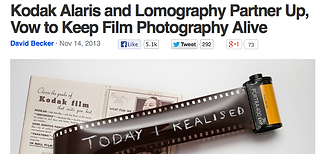retro-spectives
Starting with the 3 most common/popular analog devices — the film camera, typewriter, and record player — I spoke to people whose profession and passion still revolve around these seemingly defunct devices.
46%
do not use/own any analog device
INTERVIEWS
Market Research
SURVEY
I conducted an online survey in November 2013, which gathered 61 results.
The survery aimed to find out Singaporeans':
1. Level of experience/exposure to analog devices
2. Attitudes toward digital & analog devices
3. Needs & priorities in life
answered Yes when asked, "If you could, would you want to own any of these things?”
85%
preferred receiving a letter to an e-mail, if a loved one were to write to them
93%
preferred writing over typing — not a significant percentage
54%
EXISTING
RESEARCH STUDIES
CONCLUSIONS
-
Most people aged 18 and above have been exposed to analog devices, but most have only directly used 1 or 2 devices. The majority do not own any devices currently.
-
However, they would want to experience using an analog device, and own one if cost was not an issue.
-
Reasons range from it being “cool”, to its craftsmanship. Most value it for its historicity and nostalgia.
-
Given time to do anything they want, most people want to do things that do not directly involve digital technology.
-
Travel is the most common desire - a desire to be free of responsibility and be fascinated by the world.
-
The majority associate thoughtfulness with something done by hand (eg. letter-writing). However when it comes to convenience and speed, digital triumphs over analog (typing vs writing).

ANALOGUE UPDATE
Lowe Counsel's 2012 study on the analogue revival examines:
-
Analogue as 'Shorthand for Authenticity'
-
New tools for engagement
-
The resurgence of vinyl
-
The return of letterpress
-
And hybrid products as 'Digital Analogisms'
Implications:
-
Recreating the look and feel in digital
-
Incorporating sounds of the analogue
-
Hybrid products
-
Turning the intangible into tangible
The pdf file of the study can be found here.

JWT/Frank Rose's very recent 2013 study examines the motivations and behaviour of those returning to analog, concluding that the emotional gap between digital and analog is mostly responsible:
The human mind... need[s] to balance the rational with the emotional... It explains why an ‘emotional void’ in the digital world makes humans, even the most digitally hard-core, seek out analog experiences.
The pdf file of the study can be found here.
EMBRACING ANALOG
CASE
STUDIES
1. HOW KODAK WENT BANKRUPT, THEN CAME OUT OF IT TO CONTINUE PRODUCING FILM

“Kodak failed to leverage its own innovation in the digital camera, because executives feared it would kill their cash-cow film business.”
- Austin Moon, consumer analyst


“Earlier this year, the UK Kodak Pension Plan acquired Eastman Kodak's personalised and document imaging businesses with the plan to ‘preserve the heritage and legacy of the Kodak brand, while embodying greater speed and agility to meet market needs and changes.’ ”
- From the British Journal of Photography, 24 September 2013
-
Works with famous photographers (Leica recently announced a co-branding alliance with Magnum, and has been associated with big names in history like Henri Cartier-Bresson & Robert Capa)
-
High price ensures that its customers are serious about photography
-
Doesn’t use traditional forms of advertising, but amplifies its brand message through various marketing channels including virtual and physical photo galleries, distributors' promotions, films, and their website
-
“Focuses on the optical experience, design, and technology equally” - instead of accessories, add-ons, extra features
2. HOW LEICA MAINTAINS ITS BRILLIANT PHOTOGRAPHY BRAND
(Ken Carbone, 2011)

-
Has a rangefinder body - maintains the quality of its analog counterparts (Shutter is also quieter than a DSLR mirror - something that photojournalists value)
-
Camera focus is manual
-
Ensures that its lenses are still top-grade; assembled by hand with the highest-grade glass, without the added features of DSLR lenses
-
“The control I have with a manual Leica makes me realize that today’s abundance of buttons and features on most cameras often makes people take poorer pictures.”
3. HOW LEICA SURVIVED THE DIGITAL AGE
(Nick Bilton, 2013)

[source]
[source]